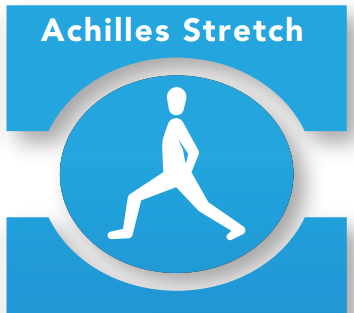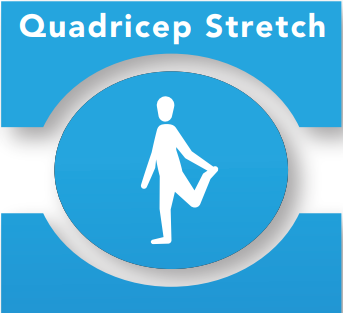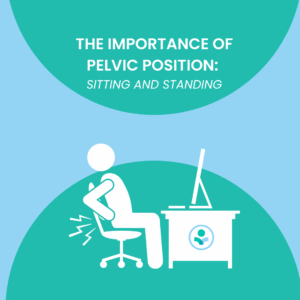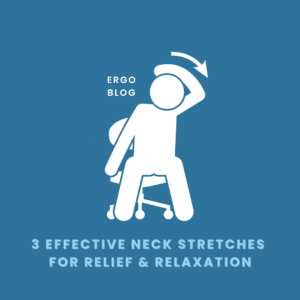Updated: Jan 20, 2023
3 Steps to Safe Lifting
According to the Bureau of Labor Statistics, work-related musculoskeletal disorders that result in days away from work most commonly involve the back alone. Musculoskeletal disorders are chronic injuries to your muscular and skeletal system due to unsafe body mechanics and positioning or repetitive motions. The majority of back injuries are occurring while performing lifting tasks.
Step 1: Warm-up
Always warm up your back and legs before performing any lifting task to reduce your risk of injury. It is important to prepare your body for work. Hold onto a chair or wall for support, if needed, during these exercises
Hamstring stretch
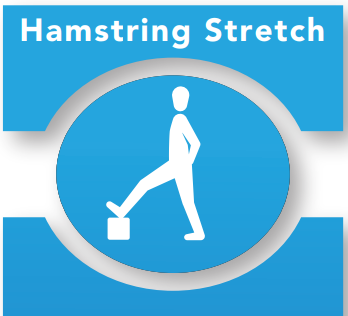
1) Position your body with your right leg forward and elevated on a sturdy, small box.
2) Keep your right knee straight and raise the toes of your right foot.
3) Balance and support your weight with your left leg.
4) Bend forward at your waist with your back straight to create a stretch in
the back of your right thigh and knee.
5) Hold this stretch for 10 seconds. Complete 3 repetitions.
6) Switch legs and repeat.
Achilles Stretch
1) Position your body with your right leg forward.
2) Shift your weight onto your right leg and bend your right knee.
3) Keep your left leg straight and your left heel on the floor which creates a stretch in your left calf and Achilles.
4) Hold this stretch for 10 seconds. Complete 3 repetitions.
5) Switch legs and repeat.
Quadricep Stretch
1) Bend your right leg back and behind and
balance on your left leg.
2) Hold your right ankle/foot with your right hand.
3) Gently pull your right knee into a more bent position until a stretch is felt on the front of your right thigh.
4) Hold this stretch for 10 seconds. Complete 3 repetitions.
5) Switch legs and repeat.
Step 2: Before Lifting
Inspect the Item
- Look for any sharp edges, grease, or moisture.
- Be aware of the weight.
Clear the Pathway
- Remove any tripping hazards.
- Ensure surfaces are dry and avoid slick areas.
Create a Plan
- Decide where and how the object will be placed.
- Determine where your hands will be located.
Ask for Help
- If you have any lifting restrictions, follow your doctor’s orders.
- Use proper equipment or a team lift if the item is too heavy.
- Be sure to communicate tasks during team lifts.
Step 3: Lift the Item
- Stand close to the load in need of lifting.
- Face the load with your head, eyes, chest, hips, and toes.
- Place your feet securely and shoulder width apart.
- Squat to the level of the load.
- Place your hands on the load with a firm grip.
- Prepare for the lift by tightening your core muscles, looking forward, and keeping a straight back.
- Lift slowly and hold the load close to your body.
- Continue to lift by extending your legs at the same time, keeping your back straight, and breathing out as you lift.
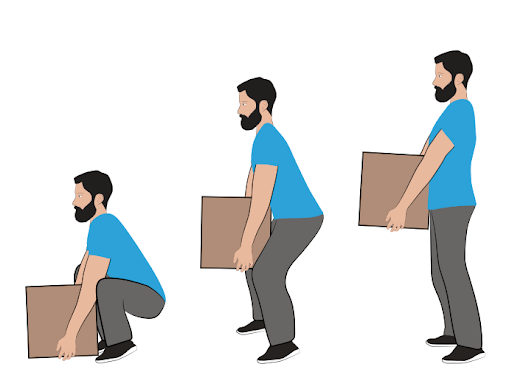
- Do Not
- Twist while lifting
- Bend at your waist or back
- Lift from one side
- Wear restrictive clothing
- Hold your breath
- Drop your end of the load without communicating
The simplest thing like lifting a box can lead to significant injuries without the correct preventative measures. Make sure to practice these stretches and consider these steps the next time you need to lift an object. If you would like this blog in a downloadable PDF, please email us at info@youralterergo.com.
Check out our YouTube video below for a visual representation of the blog!

